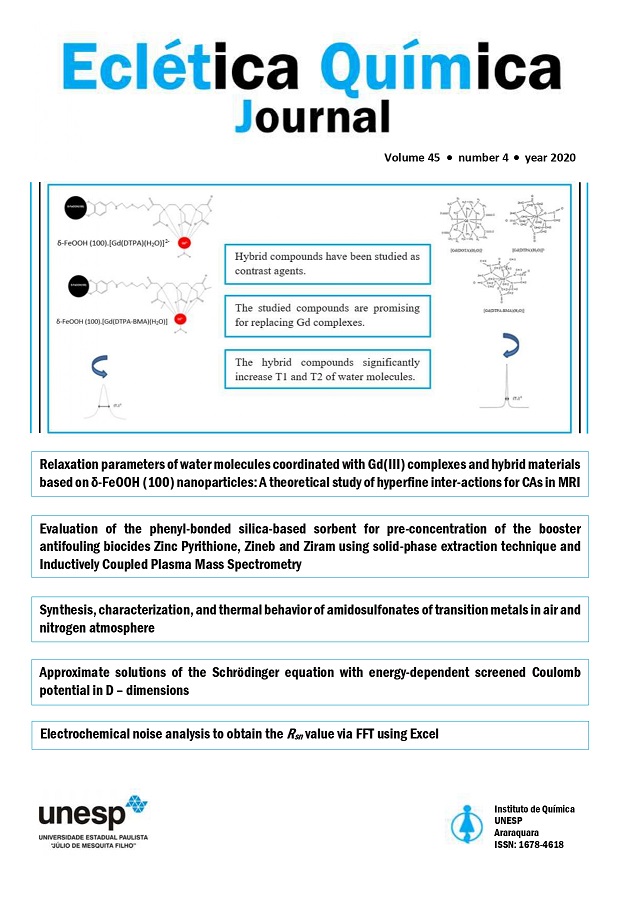Abstract
Electrochemical noise (EN) measurements are based on the fluctuations of the electrochemical potential and the current that occur during, for example, a corrosion process without an external signal perturbation. EN analysis (ENA) allows assessment of the type of corrosion and rapid determination of the corrosion rate. Microsoft Excel®, an inexpensive and readily available software package, is an excellent tool for performing repetitive calculations, with automation that saves time for the users. It is a useful tool for the analysis of EN data using fast Fourier transform (FFT), a process that is often made repeatedly and, if not automated, is quite laborious. This work presents a step-by-step procedure using Excel to perform these calculations, automating the process of obtaining the spectral electrochemical noise resistance, . This routine was used to analyze experimental potential and current noise data recorded for chalcopyrite. The results were comparable to those obtained for the same set of experimental data using Origin® software.
References
Cottis, R. A., Interpretation of electrochemical noise data, Corrosion 57 (3) (2001) 265-285. https://doi.org/10.5006/1.3290350.
Bertocci, U., Gabrielli, C., Huet, F. Keddam, M., Rousseau, P., Noise resistance applied to corrosion measurements, Journal of The Electrochemical Society 144 (1) (1997) 37-43. https://doi.org/10.1149/1.1837362.
Mansfeld, F., Su, Z., Hsu, C. H., Electrochemical noise analysis (ENA) for active and passive systems in chloride media, Electrochimica Acta 46 (24-25) (2001) 3651-3664. https://doi.org/10.1016/S0013-4686(01)00643-0.
Excel for Windows training, 2016.
Mansfeld, F., Lee, C. C., The frequency dependence of the noise resistance for polymer-coated metals, Journal of The Electrochemical Society 144 (6) (1997) 2068-2071. https://doi.org/10.1149/1.1837743.
Ritter, S., Huet, F., Cottis, R. A., Guideline for an assessment of electrochemical noise measurement devices, Materials and Corrosion 63 (4) (2012) 297-302. https://doi.org/10.1002/maco.201005839.
Bertocci, U., Huet, F., Nogueira, R. P., Rousseau, P., Drift removal procedures in the analysis of electrochemical noise, Corrosion 58 (4) (2002) 337-347. https://doi.org/10.5006/1.3287684.
Homborg, A. M., Tinga, T., Zhang, X., van Westing, E. P. M., Oonincx, P. J., de Wit, J. H. W., Mol, J. M. C., Time-frequency methods for trend removal in electrochemical noise data, Electrochimica Acta 70 (2012) 199-209. https://doi.org/10.1016/j.electacta.2012.03.062.
Bertocci, U., Frydman, J., Gabrielli, C., Huet, F., Keddam, M., Analysis of Electrochemical Noise by Power Spectral Density Applied to Corrosion Studies: Maximum Entropy Method or Fast Fourier Transform? Journal of The Electrochemical Society 145 (8) (1998) 2780-2786. https://doi.org/10.1149/1.1838714.

This work is licensed under a Creative Commons Attribution 4.0 International License.
Copyright (c) 2020 Eclética Química Journal





